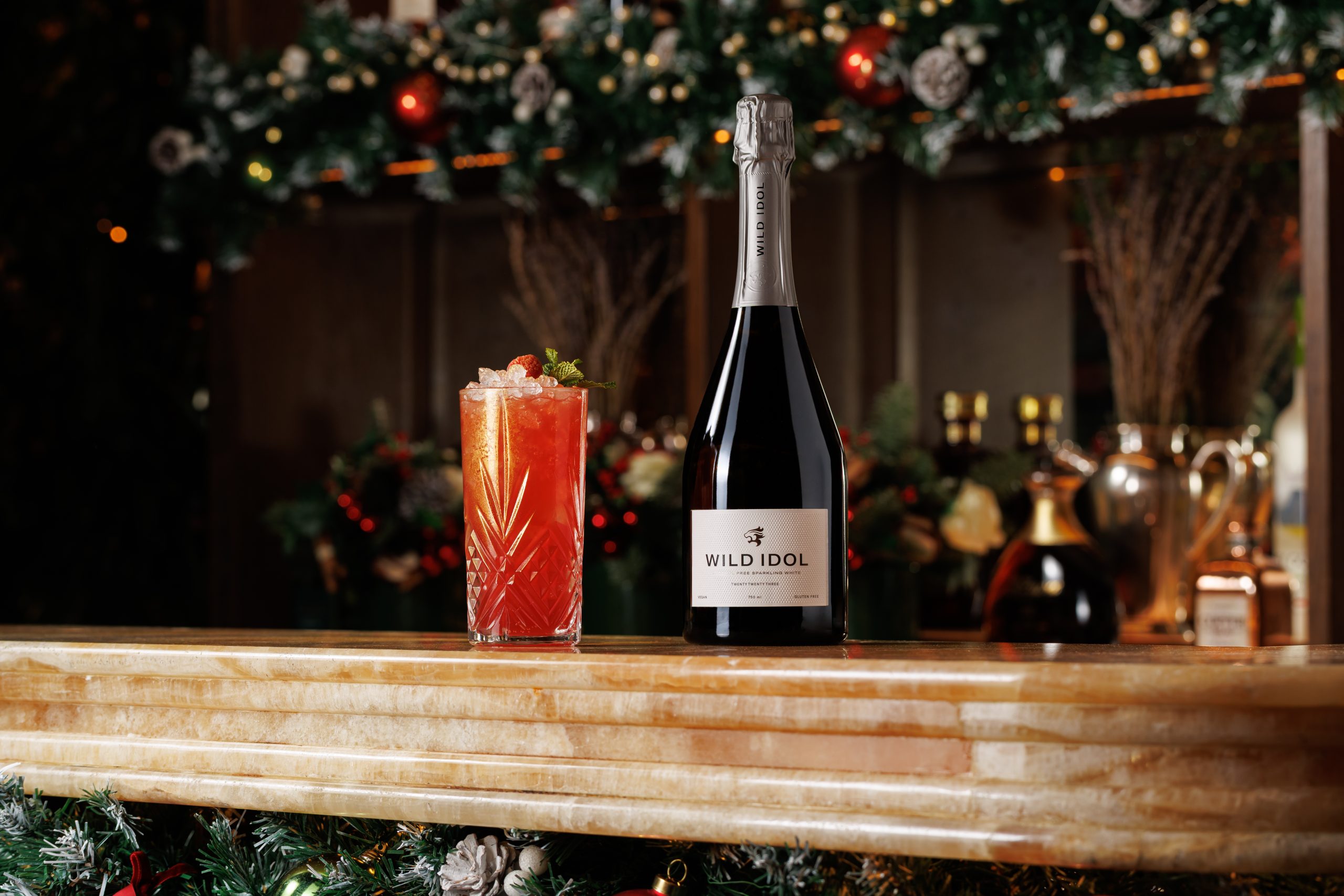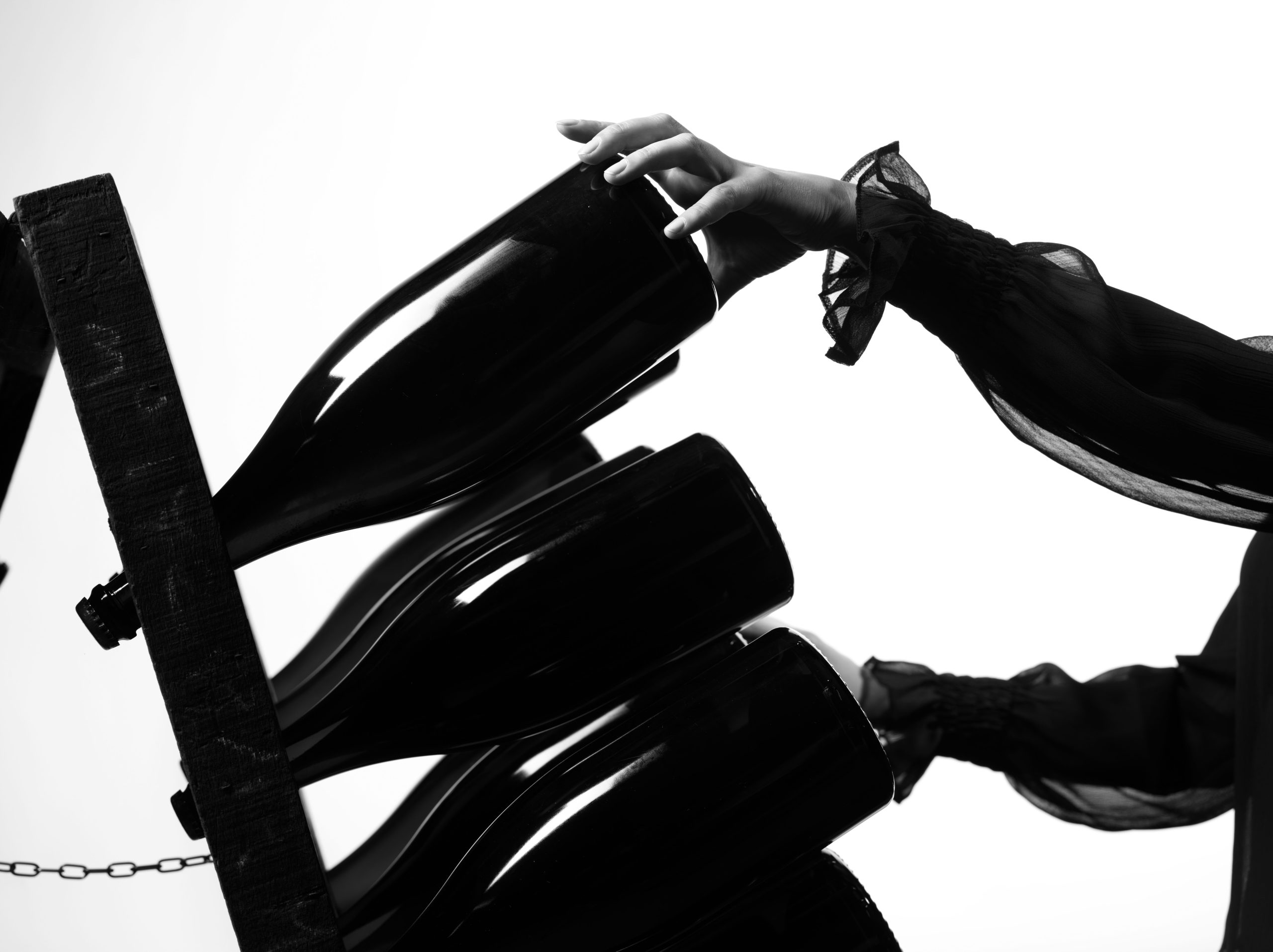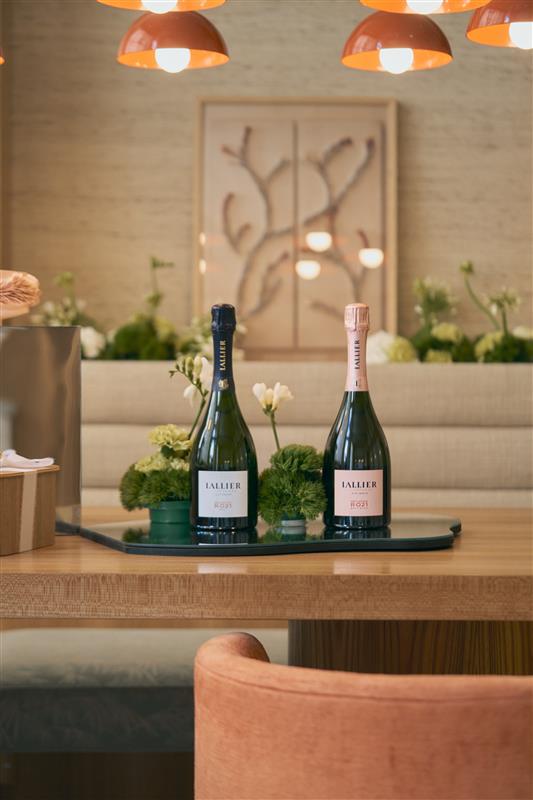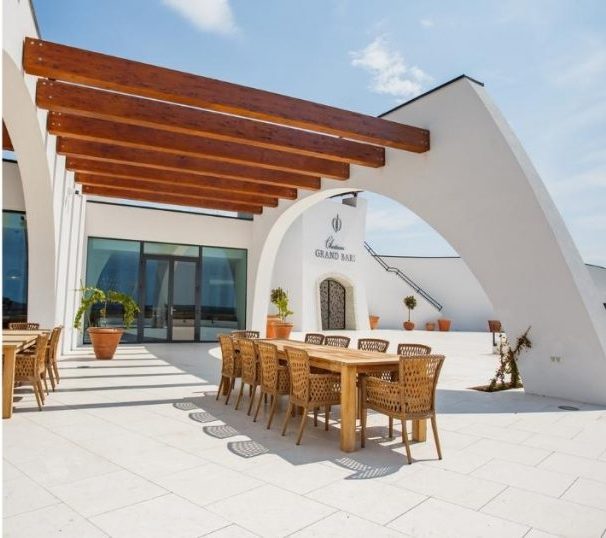Meunier: Champagne’s Icarus Grape?
The Meunier variety is the Champagne region’s lesser-revered but no less important grape, compared to the more celebrated Pinot Noir and Chardonnay. The three varieties together make up over 99.5% of the grapes grown in the region. Nick Breeze investigates.
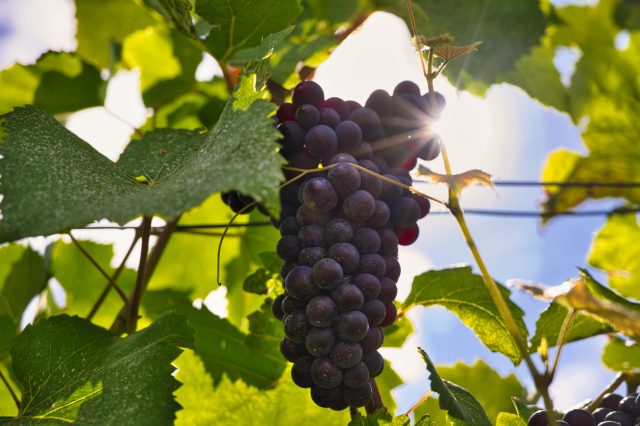
The often-called ‘filler’ grape variety suffered an image problem until about a decade ago when the principal growers who have worked with it for generations in the Marne Valley, decided to band together and rewrite Meunier’s story.
I first attended the Meunier Institute tasting in 2016 when it was an out-of-town satellite of Printemps de Champagne, or ‘Springtime in Champagne’, held in Reims. This is the annual week-long series of tastings that attracts hundreds of professionals to the city to gauge the quality of the previous years vin clairs – the still wines that will eventually be transformed into sparkling cuvées – and a wide selection of what the grower producers are offering in both sparkling and still wines.
Outside of the Champagne region, where the remaining 20% of the variety is grown, it is more generally called Pinot Meunier but in Champagne, the prenom is dropped. This blanket omission of the Pinot heritage is adopted across the region.
Discussing this reminded me of my interview with writer, Michael Edwards, back in 2016 when he said, “People think it is like Pinot Noir but it isn’t. It is a different grape. I don’t think it should be called Pinot Meunier. It should just be called Meunier!”
Speaking to wine consultant, Pierre-Yves Bournérias, who is also cofounder of the Meunier Institute, he said that Meunier needed to be defended: “When I was a student in the 80s, I always heard that Meunier was the third grape variety. It was helping the blend. It was not interesting for long-ageing. It was sensitive to oxidation. It did not have the elegance of the Chardonnay or the structure of the Pinot Noir.”
He then dismissed all these accusations stating that when it comes to elegance and structure, Meunier is an equal of both Chardonnay and Pinot Noir. The accusation that Meunier cannot age was called out again when I spoke to Australian importer, Victor Pugatschew, from ‘Champagne de Vigneron’: “In 2004 when I first started my Champagne journey, I tasted a 1955 Meunier with Jose Michel.”
Victor then discovered the cuvées of Bruno Michels and the early beginnings of Jérôme Prevost’s Meunier Champagnes when he visited Jacques Selosse in Avize. He describes these experiences as “a revelation.”
He specifically draws attention to the purity and intensity of these older vintages, qualities that have been honed over the years by a number of producers exploring new innovations. These include the increasing use of perpetual reserves and, in the case of Champagne Demiére, a bespoke solera system, all adding to the importance and value of the reserve wines.
Reserve wines
Champagne specialist educator, Carl-Edmund Sherman, points out that the reserve wines are the “most important wines we have in Champagne … the non-vintages requiring a certain percentage of reserve wine to balance out whatever nature has given or taken from that year.”
The day before Printemps de Champagne commenced, a group of us were invited to Champagne Demiére in the village of Fleury La Riviére in the Marne Valley for a comprehensive demonstration of what the estate was achieving with Meunier.
Carl-Edmund, who organised the visit with Demiére said, “The objective was to show not just the uniqueness of the terroir because there are many unique terroir in Champagne. We wanted to show how that uniqueness was translated through the practices in both vineyard management and vinification by Jérôme, the head winemaker.”
Back in 2016, Michael Edwards had suggested the reason for the rise in popularity of Meunier was because climate change was creating hotter vintages and Meunier’s strength was to add freshness and additional floral characteristics. He cited 2003 as a hot vintage where the variety had resisted the heat, retaining it’s freshness.
As we all assembled in a part of the cellar surrounded by oak barrels stacked three high, Jérôme disgorged a number of older bottles for us to taste blind. When it came to the second bottle, Champagne specialist importer Peter Crawford, from Sip Champagne, spotted the hallmarks of a hot vintage immediately, calling it correctly as 2003.
This was a year that left an indelible mark on the memory of France when 15,000 people died in the heatwave. Although the Champagne obviously reflected the vintage, it retained its ripe character and trademark liveliness.
It was the third vintage that Jérôme disgorged that caused Dawn Davies MW to exclaim “Blue cheese!”. The aroma was unmistakable – brilliant, desirable, more-ish, gastronomic, structure-intact, keeping the wine elegant and lively. It was the ’88 vintage, proving decisively Meuniers’ fabulous ageing potential.
Tasting the base wines from the perpetual reserve and the solera system was also a revelation.
The solera was managed with a fractional top-up of the barrel system with an objective to add complexity and enhance the expression of flavours. The solera barrel sample we were given was started in 2018 and had a slight toffee nose, fresh pear-drop flavour and long pure finish. It was fabulous wine in its own right.
Speaking later about these techniques with Peter Crawford, he cited another producer at the ‘Melting Crus’ tasting during Printemps, Geoffrey Delouvin, of Champagne Famille Delouvin. His cuvée Meunier Perpetual is based on a perpetual reserve that started in 1992, with the youngest vintage being 2020.
Partner Content
Crawford said: “It’s such a lovely, fresh, crisp, tense Meunier but has wonderful complexity coming from the perpetual reserve. And for me, that’s what Meunier should be about, relying on multi-vintage blends to bring freshness and tension and vibrancy to the game.”
Malolactic conversion – to block or not to block
It was while at the Meunier Institute tasting in Reims this year that I noticed a number of the producers, who showed cuvées that expressed a combination of crisp purity and tension, were blocking malolactic conversion. These included producer André Heucq, Jérôme Blin and Éric Taillet.
Malolactic conversion is a natural process whereby the apply-tart malic acid converts to the creamier lactic acid. It can be manipulated by the winemaker to produce different stylistic effects by partial or fully blocking, or, for the opposite effect, promoting the conversion process.
Fanny Heucq (André Heucq Champagnes) described the effect of blocking malolactic conversion as removing a mask that covers the terroir, allowing a clearer expression of the rare green clay soils, which, she says contribute energy and a mineral quality, noticeable in their Héritage Blanc de Meunier.
Later at the ‘Vignerons Independants de Champagne’ tasting, I spoke with Olivier Belin of Champagne O’Belin, who says that stopping the malolactic conversion is his response to the rising temperatures from global warming. Olivier focuses on expressing the soils of his specific plots and blocking the malo helps reveal those individual qualities from adjacent plots.
Band-aid
Carl-Edmund is cautious about relying on it as a salve for climate heating: “Many see the non-usage of malo conversion as a bandaid for the greater problem of climate change … ” He then cited the much loved 2018 vintage where the malic acids were so low that the total acidity levels for the year were the lowest since 1970. As the heating trend progresses, he suggests this could be where a sticking plaster is trying to address a problem that requires a tourniquet.
Pierre-Yves Bournérais acknowledged the upside of blocking malo but then said, “If the ageing of the base wine before blending/bottling is not conducted well, the risk is to have a wine that will age with only the support of the acidity.”
Longevity of the wine depends on the degree to which the winemaker can grasp the profile of the vintage.
To further emphasise that blocking malo is not the only way to discover expression, Pierre-Yves highlighted a specific case study with a customer where, despite blocking malo, it kept occurring spontaneously in the barrel after a few years.
He said: “We decided to move to 100% malo completed. The first year we discovered that the acidity/energy has been replaced by another sensation: sapidity and saltiness; another kind of energy after all.”
Climate – wings of Icarus
Peter Crawford suggested that for years it was expected that Champagne would see a net benefit from global warming, saying, “we were all thinking that Champagne sat on the margin of. winemaking. We had this belief that if it sits on the margin, then if you push the margin further north, all it can do is bring more beauty, more depth, more richness to Champagne, but Champagne exists because it’s on the margin!”
A producer making very clean and precise Meunier Champagne is Jérôme Blin. He said that the increased heat was risking making the wines too heavy. His main challenge was to strike the balance between ripeness and freshness. This point was also made my Victor Pugatschew, who said: “Meunier seems to go real flabby in warmer years. Careful viticulture, blocking malo, and lower dosages need to be carefully explored.”
As I spoke with more of the growers, it became clear that climate heating is a big problem for Meunier. Pierre-Yves added: “Meunier is the grape variety that will be more affected because the window of ripening for the Meunier is maybe a little bit smaller than the window for Pinot Noir and Chardonnay… I am totally convinced that the Meunier needs a bit more attention in the winemaking.”
The rising heat combined with Meunier’s particular susceptibility to mildew is already a growing stress in the Marne Valley. The success of Meunier will have a lot to do with factors that include orientation of the vineyards towards the north and east, as well as creating shade with pruning techniques. But it is the skill of winemakers working at the granular level, putting every vinification tool to work in order to assure their loyal but critical followers that Meunier’s rising profile is not stymied by the enhanced heat from the sun.
A Meunier Soufflé
When I ask Peter Crawford if he thinks Meunier’s reputation is reaching outside the bubble of enthusiasts, he is not so sure. He first raised the idea of a ‘Meunier revolution’ back in 2016 and despite a far greater appreciation of these wines, he says hasn’t witnessed it yet. Victor Pugatschew says his customers in Australia like the richness and elegance combined with the food friendliness of Meunier, especially with Asian cuisine.
Pierre-Yves responds to whether the Meunier Institute and the broader collective of enthusiasts have made an impression by pointing out that one larger house, Gosset, now has a 100% Meunier cuvée. He also notes that a young researcher, Jelena van Eerdenberg, is writing a thesis on Meunier for Weinakademiker, part of the Austrian Wine Academy, that will be finished in mid-June 2024. His Meunier Institute cofounder, Éric Taillet, is also working on a book dedicated to the grape variety.
Aside from this he remains cautious: “I would say these things are a little bit like a soufflé … you need to keep the vibration going on … this is what we are trying to do.”
On the final evening in Reims with Carl-Edmund, he shares a last bottle. I taste the tense ball of gorgeous ripe fruit, a moment suspended in time. On revealing the label I see it is Charlier et Fils Meunier Addict 2014 – the final stage of the initiation is complete.
Nick Breeze writes about wine and climate change and is the author of ‘COPOUT – How governments have failed the people on climate’.
Related news
Non-vintage is ‘putting together a puzzle’ says Champagne Lallier

